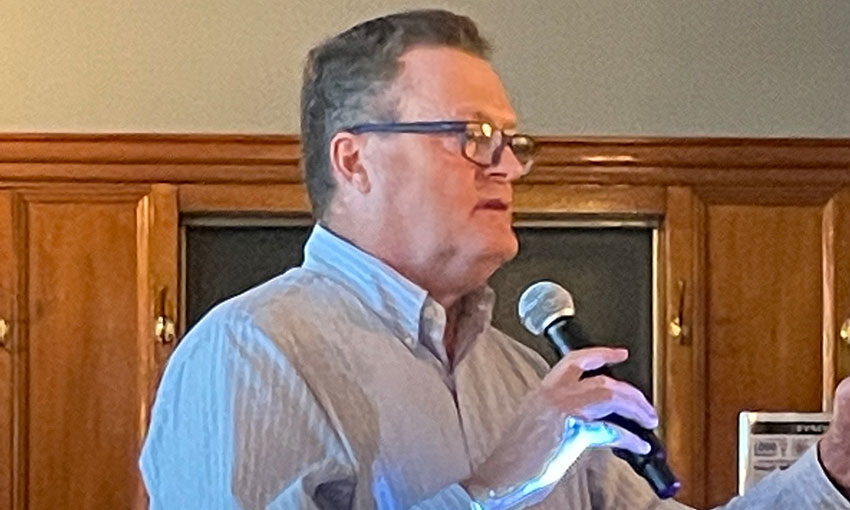By Kendall Carter
CAPTAIN Ashley Papp CSC RAN FNI gave a presentation to a combined meeting of the Nautical Institute, the Company of Master Mariners of Australia and the Australian Institute of Navigation on Thursday 10th November at the Occidental Hotel in Sydney.
The theme of his presentation was Civil Mariners, Commercial Partnerships and Navy’s Future. Captain Papp (who was recently selected for promotion to Commodore) is currently the RAN’s Director of Amphibious and Combat Support Capability. He joined the RAN in 1989. He is a navigation warfare specialist with extensive operational at sea and in command of HMA ships Brunei, Choules and Canberra.
He explained to the assembled audience of very experienced mariners that this presentation was very much his view on how the RAN has evolved its understanding of the commercial shipping world in the recent past. He started by explaining that in the early 1990s he believed there was an “us and them” culture in the RAN regarding the merchant marine. Then, as new vessels were procured for the RAN, with novel azipod propulsion systems, Navy realised they needed to embrace relations with their commercial brethren. Navy’s investment in the manned-model Ship Handling Training and Research Centre at Port Ash near Newcastle had saved money in maintenance and repair and improved competence across a generation of navigators and commanders.
Captain Papp went on to explain that the RAN has a massive capital investment of $172 billion planned over the next 20 years. This is not only for the much-publicised new submarines but also other vessel types such as amphibious ships, frigates and offshore patrol vessels.
He said that increasingly Navy will come to work in partnership with commercial maritime entities. Defence already employs many Australian civilian seafarers and work with their commercial partners in the fields of salvage, rescue, towage, hydrography and increasingly with autonomous vessels.
Navy needed to do more especially in the Pacific with limited assets. He gave as an example, the RAN’s 5 – 7 patrol boats committed daily to border protection. There were becoming evident more cost-effective ways to achieve the same result by working with the civilian maritime sector.
His role is to sponsor commercial partnerships and a lot of planning is going into how to do this effectively. He posed some questions: Do we use foreign or Australian crews or even a mixture of both? What are the legal aspects? What flag would the vessels fly? The white, red or blue ensign? As an aside he mentioned that the Royal Australian Fleet Auxiliary may still legally exist – is this a valid way to proceed? He explained that the Australian Army has been using commercial shipping for their deliberate logistical needs for some time. Navy will need to form a nexus with Army to maximise these assets.
In conclusion Captain Papp said Navy has recognised “We can’t do it all” and that there is a lot of maritime expertise out there and that we are better together. Much thought is now being applied to how to maximise the combined strengths of the military and non-military maritime spheres to achieve better results for the country.
The presentation was extremely well received by the audience and there was a lively question and answer discussion at the conclusion.

